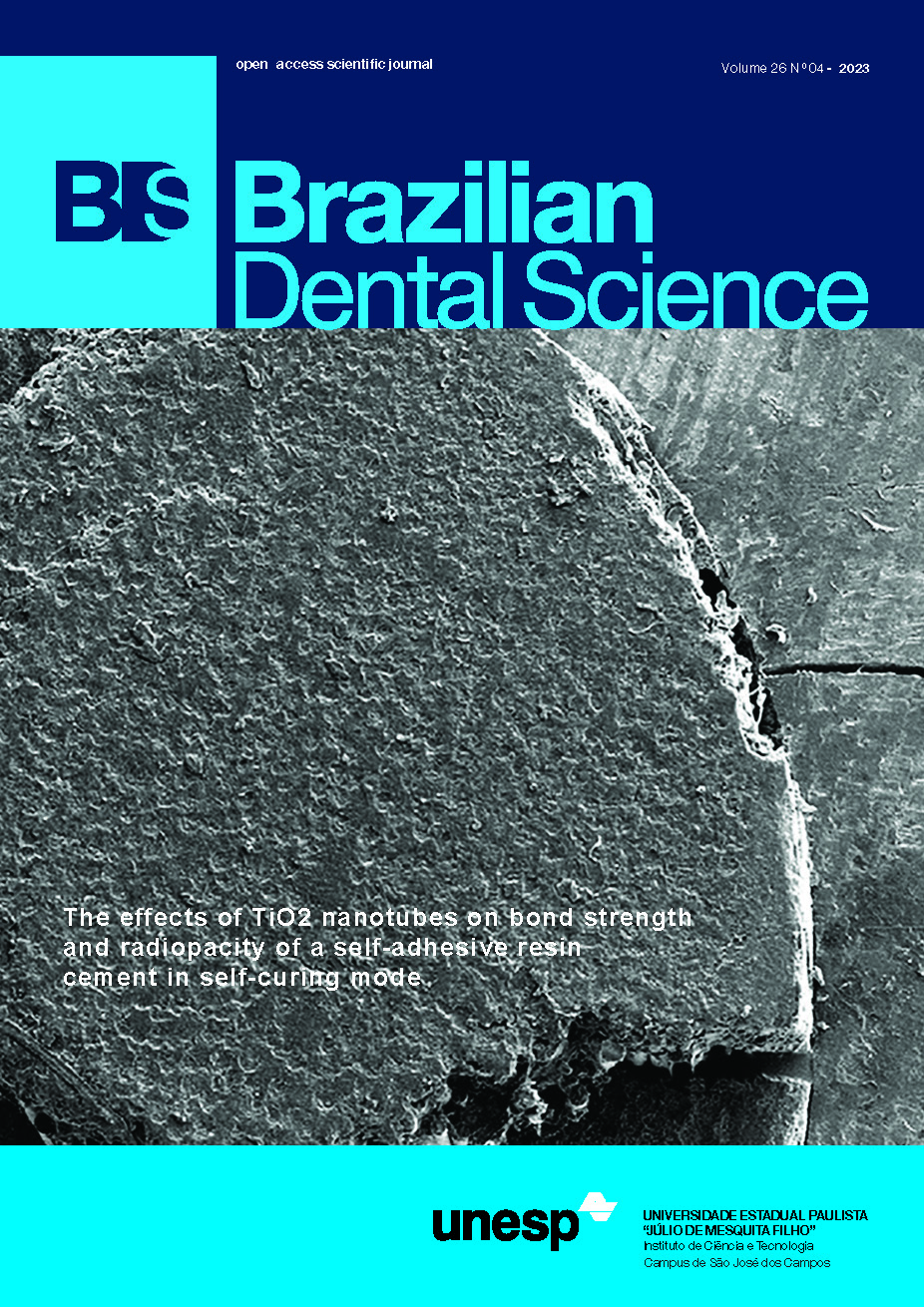Dental caries of stunting and underweight toddlers aged 3-5 years old among Pandhalungan community
DOI:
https://doi.org/10.4322/bds.2023.e3833Resumo
Objective: Toddler dental caries can interfere with children’s nutritional conditions, toddlers have difficulty eating and disturbing sleep rhythms, where growth hormones work optimally when toddlers sleep. The study aims to identify and analyse the difference between dental caries of stunting and underweight toddlers aged 3-5 years old among Pandhalungan community. Material and Methods: An analitical observational study with a cross-sectional approach was performed in Panduman village, Tegalbesar, Jember. The population was 530 stunting toddlers and 162 underweight toddlers. The sample was 114 stunting toddlers and 114 underweight toddlers selected by simple random sampling. The variable was the dental caries of stunting and underweight toddlers. The dental caries was checked by the inspection in the light space. The information of stunting and underweight toddlers was obtained from the public health center data. The data were analysed by descriptive statistical test and continued by Mann-Whitney U test . The majority age of the toddlers was 49-60 months with 73.68% from stunting toddlers and 71.05% from underweight toddlers. Results: The majority of the parents’ recent education was low, which were in junior high school and primary school. The average dental caries of stunting toddlers was 5.07 and 5.67. The test resulted Asymp. Sig. (2-tailed) 0.159 less than a(0,05) that means there was no difference between dental caries of stunting and underweight toddlers. Conclusion: There was no difference between dental caries of stunting and underweight toddlers.
KEYWORDS
Community; Dental caries; Minors; Stunting; Underweight.
Downloads
Downloads
Publicado
Como Citar
Edição
Seção
Licença
TRANSFERÊNCIA DE DIREITOS AUTORAIS E DECLARAÇÃO DE RESPONSABILIDADE
Toda a propriedade de direitos autorais do artigo "____________________________________________________________________" é transferido do autor(es) para a CIÊNCIA ODONTOLÓGICA BRASILEIRA, no caso do trabalho ser publicado. O artigo não foi publicado em outro lugar e não foi submetido simultaneamente para publicação em outra revista.
Vimos por meio deste, atestar que trabalho é original e não apresenta dados manipulados, fraude ou plágio. Fizemos contribuição científica significativa para o estudo e estamos cientes dos dados apresentados e de acordo com a versão final do artigo. Assumimos total responsabilidade pelos aspectos éticos do estudo.
Este texto deve ser impresso e assinado por todos os autores. A versão digitalizada deverá ser apresentada como arquivo suplementar durante o processo de submissão.




























